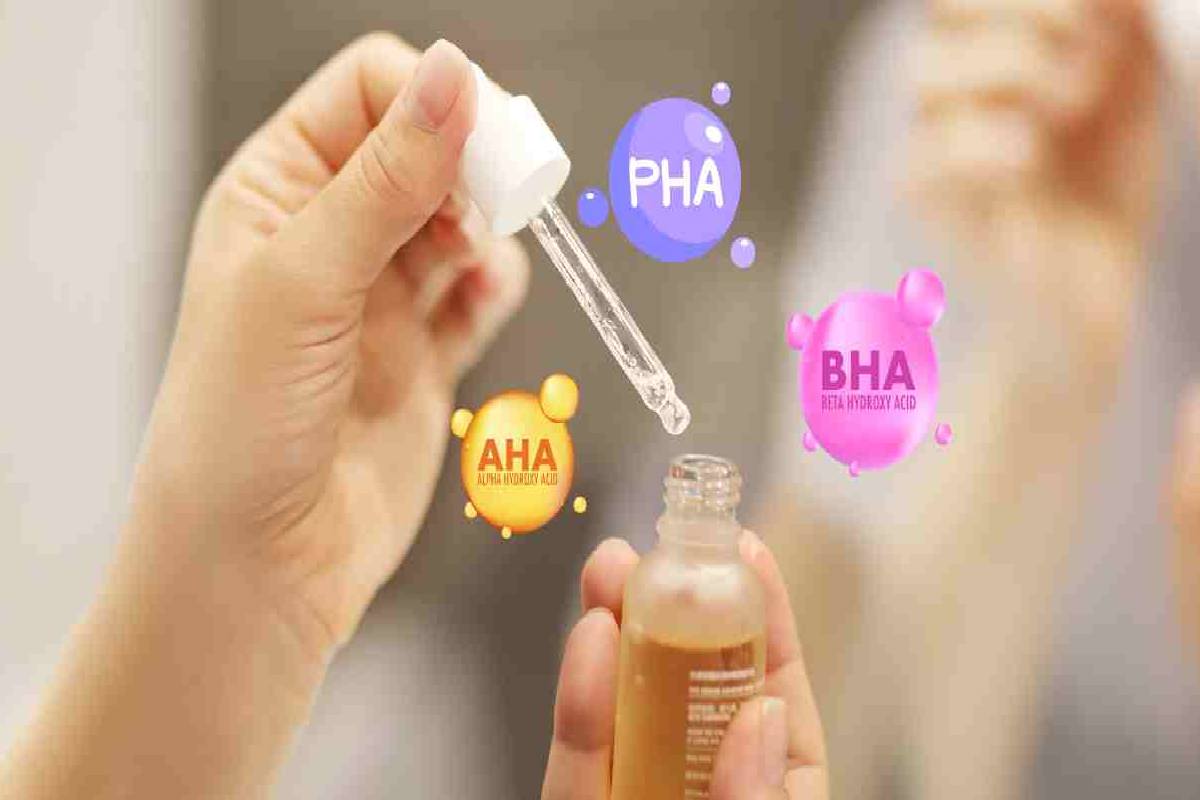Facial Acids – AHA, BHA, and PHA. Facial acids are active ingredients that cause assessable changes in the skin, visibly and scientifically. They’re powerful skincare enhancers that produce dramatic effects, some of which you can see immediately.
Facial acids stimulate collagen and elastin synthesis by making it easier for other active components to penetrate the skin when added to other skincare solutions. More elastin and collagen means stronger bonds between skin cells, ultimately improving the skin’s elasticity and texture.
Perhaps they sound active to you, like glycolic acid or salicylic acid.
Table of Contents
What do they do and what is the purpose of them?
Acids are active ingredients widely use in cosmetics for their multiple benefits for the skin, especially their ability to exfoliate, renew, deep cleanse and hydrate.
Numerous acids exist, but they are divided into three large groups such as PHA, BHA, and AHA:
▪️ The alpha-hydroxy acids (AHA’s) ▪️ The beta-hydroxy acids (BHA’s) ▪️ ..and finally, the poly-hydroxy acids (PHA)
Let’s discover who is who, when to utilize each, and how they differ!
Acids that are Present in Cosmetics
Although the word acid may sound a bit aggressive at first – just like chemical peels – they are molecules found in nature and are used in cosmetics because they can eliminate the superficial layers of cells when they are helpful in the skin. Dead, sebum, or impurities leave skin softer, smoother, more precise, and brighter.
This profound general explanation about acids in cosmetics is a standard action, but dozens of cosmetic acids exist. Each has different properties: cell renewal, antioxidants, sebum regulators, firming, and even moisturizing.
But do not worry that it is not necessary to know the properties of each one. Below, we resolve to focus on three large groups of organic acids that have physical characteristics in common: alpha-hydroxy acids (AHA’s), beta-hydroxy acids (BHA), and the lesser-known poly-hydroxy acids (PHA).
Facial Acids – Alpha Hydroxy Acids (AHA’s)
Alpha hydroxyl acids come from fruits such as sugar cane, citrus, and almonds and have identical characteristics and similar molecular structures. Exfoliation, renewal, and hydration of the skin are the main influences of AHAs. That is why they are said to be transforming active ingredients, just like the retinoid family.
How do they work? It is essential to know that acid exfoliation does not work by abrasion as it happens with scrubs, which exfoliate the skin by dragging particles on it that “scratch” dead skin. Acids do a chemical peel. They are apply and left to act, “undoing” the unions of dead cells so that they come off more easily.
In addition, the AHA’s are tiny molecules (especially glycolic acid), which can penetrate the epidermis and therefore do a gentle but deep exfoliation and stimulate both cell renewal and the synthesis of collagen and elastin proteins that continue firm and elastic skin.
Each acid has different properties, so using products with formulas that mix them is essential. For example, glycolic acid has greater exfoliating and antiaging power (the smallest molecule), while lactic acid is more moisturizing and softening. Other AHAs, for example, are citric acid (lemon, orange…), tartaric acid (from grapes), or mandelic acid (almonds).
Glycolmix is our chemical peel based on 20% AHA’s: glycolic, lactic, and citric acid; discover its benefits:
Removes dead cells and impurities, improving texture and luminosity. It enhances elasticity, moisturizes, and softens wrinkles of expression. It improves the outcomes of cosmetic procedures by strengthening the skin’s absorption of active substances. Clarifies superficial spots produced by the sun, unifying skin tone. Remove acne marks and scars.
Facial Acids – Beta Hydroxy Acids (BHA’s)
Beta-hydroxy acids are molecules similar to AHAs but are soluble in oil. This allows them to penetrate the pilosebaceous follicle and break down the accumulated fat and dirt (lipophilic action). BHAs do not work so much on the skin’s surface, but inside the pores, so they are a top active ingredient for oily and combination skin!
This group’s most used acid in cosmetics is salicylic acid obtaine from willow bark.
It improves the appearance of opened pores, eliminates blackheads, and prevents them, maintaining a much more balanced, clean, and smooth skin.
It is also sebum-regulating, antibacterial, and has a gentle exfoliating and lipophilic action.
A perfect combo to treat and prevent acne, comedones, and millions (of white fatty cysts).
Find salicylic acid and other AHA’s and oat, mallow, and chamomile extracts in our AHA/BHA Exfoliator if you have oily skin with enlarged pores, blackheads, or millions.
Facial Acids – Poly-Hydroxy Acids (PHAs)
Skin, as a maintenance treatment. Finally, we have (gluconolactone and lactobionic acid) that also have an exfoliating, antioxidant, and renewing action. Still, unlike AHA’s and BHA’s, they are softer. So they are usually include in daily treatment products supporting skin cell renewal. They are also the least irritating, so they are tolerated even by the most sensitive skin.
Conclusion
When we talk about cosmetic acids, we refer to substances that, in contact with the skin, help to renew it. By stimulating this exfoliation of the horny layer of the skin (the outermost), collagen production is boosted at the same time. In short: they are very beneficial! They improve aging marks but also skin hydration and elasticity.


